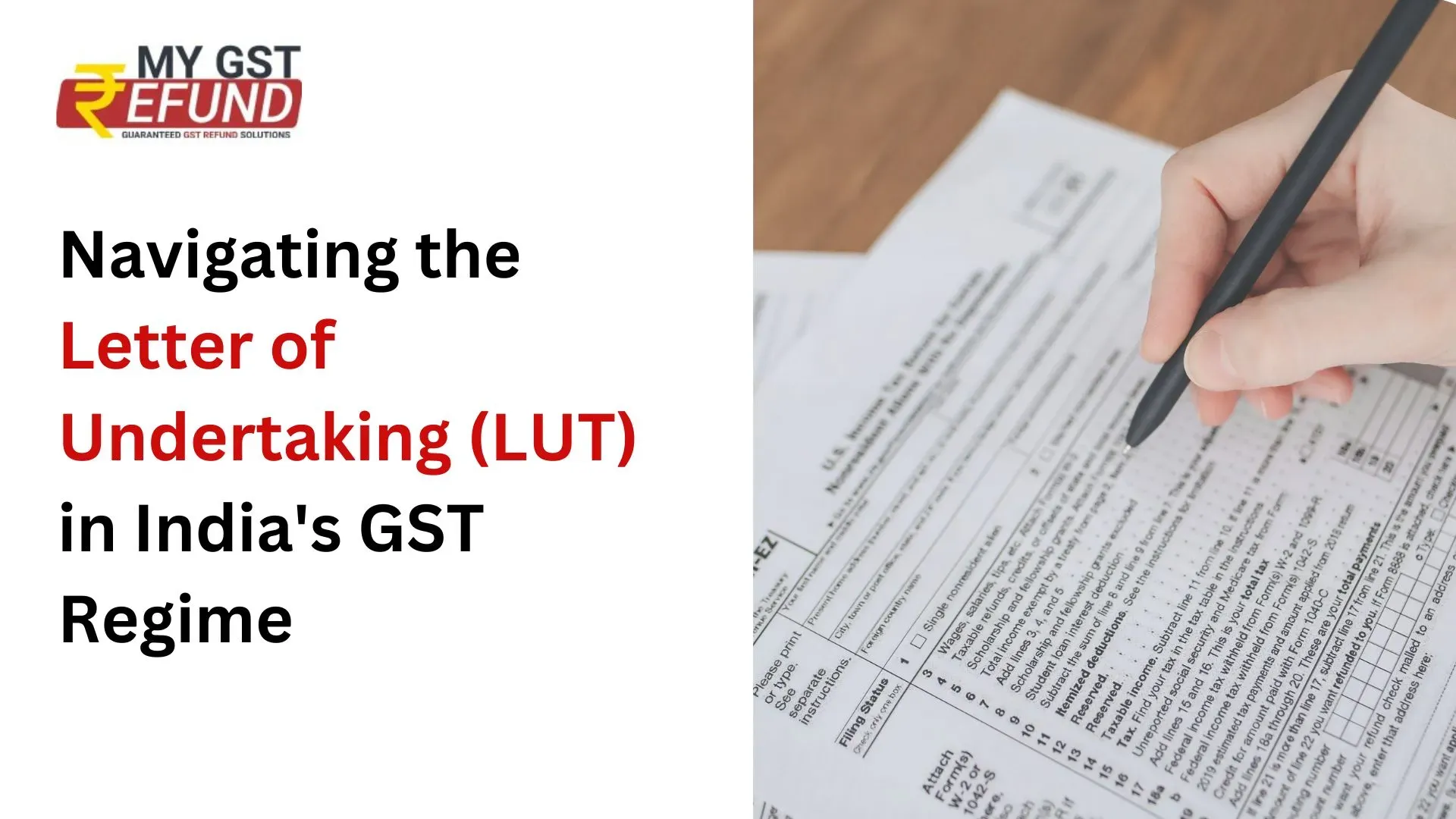Navigating the Letter of Undertaking (LUT) in India's GST Regime
Published on: Fri Mar 01 2024
Bio (Reveal/Hide)

In the realm of India's Goods and Services Tax (GST) regime, the Letter of Undertaking (LUT) plays a crucial role in facilitating exports. This article delves into the intricacies of LUT, providing valuable insights for exporters seeking to streamline their export operations.
What is LUT?
LUT stands for Letter of Undertaking. It's a legal document submitted by a registered taxpayer to the government, serving as a guarantee to fulfill specific obligations under the GST law. In the context of exports, the LUT assures the authorities that the exporter will: "Pay the Integrated Goods and Services Tax (IGST) on exported goods or services in the future, File the requisite GST returns, and Adhere to all other applicable GST regulations".
GST LUT Form for Exporters
The Form GST RFD-11 serves as the official LUT form for exporters under GST. It needs to be submitted electronically on the GST portal before making any zero-rated supplies or exports without immediate IGST payment.
Eligibility Criteria
Not all exporters qualify for filing LUT. Here are the eligibility requirements:
The taxpayer must be a registered person under GST.
The taxpayer should not have any past convictions for tax evasion exceeding Rs. 2.5 Crore under the CGST Act, IGST Act, or existing law.
The taxpayer intends to export goods or services or make zero-rated supplies to SEZs (Special Economic Zones) without immediate IGST payment.
Steps to File LUT
Access the GST Portal: Visit the official GST portal (https://www.gst.gov.in/).
Login with valid credentials: Enter your login details and authenticate yourself.
Navigate to LUT filing: Go to Services > User Services > Furnish Letter of Undertaking (LUT).
Fill out Form GST RFD-11: Provide accurate information in the form, including details about the financial year, type of LUT, and bank guarantee details (if applicable).
Submit the form: Once you've reviewed the information, submit the form electronically.
Documents Required for LUT under GST
Copy of the GST registration certificate
Audited financial statements for the previous year (may be required in certain cases)
Bank guarantee details (optional, but recommended for high-value exports)
Advantages of Filing LUT for Exporters
Improved cash flow: Exporters can retain working capital by deferring IGST payment until the export realization.
Simplified export procedures: LUT eliminates the need for upfront tax payment, streamlining export processes.
Competitive edge: Reduced financial burden can enhance an exporter's competitiveness in the international market.
FAQs
Is LUT mandatory for all exporters?
No, LUT is not mandatory for all exporters. It's an option available to eligible taxpayers who wish to defer IGST payments.
What happens if I fail to fulfill the obligations outlined in the LUT?
The government can recover the IGST from the exporter, along with applicable interest and penalties.
Can I revise the LUT once submitted?
Yes, you can revise the LUT within the financial year by filing a revised form.
Related Posts





